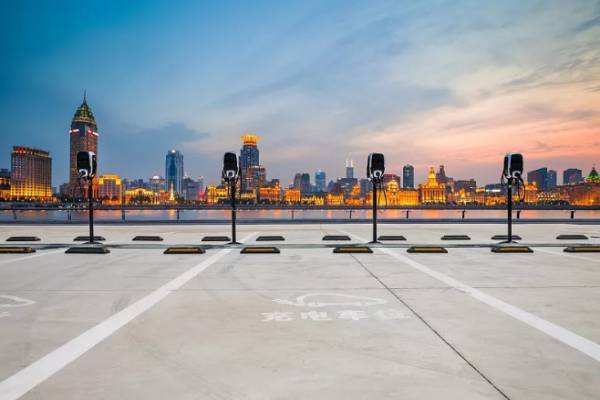With the development of the times, with the continuous improvement of people’s living standards, the protection of the environment has become the first priority. Therefore, a variety of new energy electric vehicles have come out. It has no exhaust emissions and can be said to be green transportation, but it also requires Therefore, the fast charging pile for household electric vehicles was born. The charging pile has the difference between fast charging and slow charging. Next, I will introduce the fast charging pile for household electric vehicles.
①Home electric vehicle fast charging pile: the difference between fast charging and slow charging
There are two different charging ports on electric vehicles. How to use these two charging ports?
Because electric vehicles do not have only one charging mode like everyday electronic products, electric vehicles have two charging modes, DC charging mode and AC charging mode. Because the charging time is different, we usually call the DC charging mode and the AC charging mode fast charging and slow charging.
Fast charge (DC): use DC for charging and store directly into the power battery.
Slow charge (AC): The AC power is converted into DC power by the on-board charger and stored in the power battery.

②Home Electric Vehicle Fast Charging Pile: The Determinants of Fast and Slow Charging
1. The battery capacity is determined by the battery temperature
There are many factors for the problem of charging speed during fast charging. Battery capacity, battery temperature, and BMS will affect the charging speed. Of course, BMS is from the perspective of protecting the battery, so it is no longer considered. In the case of the same output power of the fast charging pile, the higher the battery capacity, the longer the charging time.
2. The charging power of the fast charging pile is determined
Since charging is an interaction between a charging pile and an electric vehicle, after talking about the factors of electric vehicles, the charging pile will also affect the speed of charging. Because the charging piles of different operators have different output voltages and currents, the charging power is also different.
3. Determined by environmental factors
After talking about the factors of vehicles and fast charging piles, the nearby electricity environment is also a factor that affects the charging speed of electric vehicles. For example, when the electricity consumption peaks in summer, if the fast charging pile is powered from a nearby public transformer, the voltage will naturally drop gradually as the transformer load continues to increase or reaches its peak, so the charging speed will naturally change at this time slow.
③Is fast charging bad for the battery?
Whether fast charging will destroy the battery depends on the battery density, battery material, battery temperature and BMS (battery pack management system).
Among them, battery density, material, and temperature determine the speed of fast charging, and BMS is the core component to control fast charging. Its main function is to intelligently manage and maintain each battery unit to prevent overcharging and overdischarging of the battery. Extend battery life and monitor battery status.
Therefore, during the fast charging of electric vehicles, after controlling the input current and voltage through the BMS, the damage to the battery caused by fast charging is minimized as low as possible. In a limited time, these damages can be ignored.














